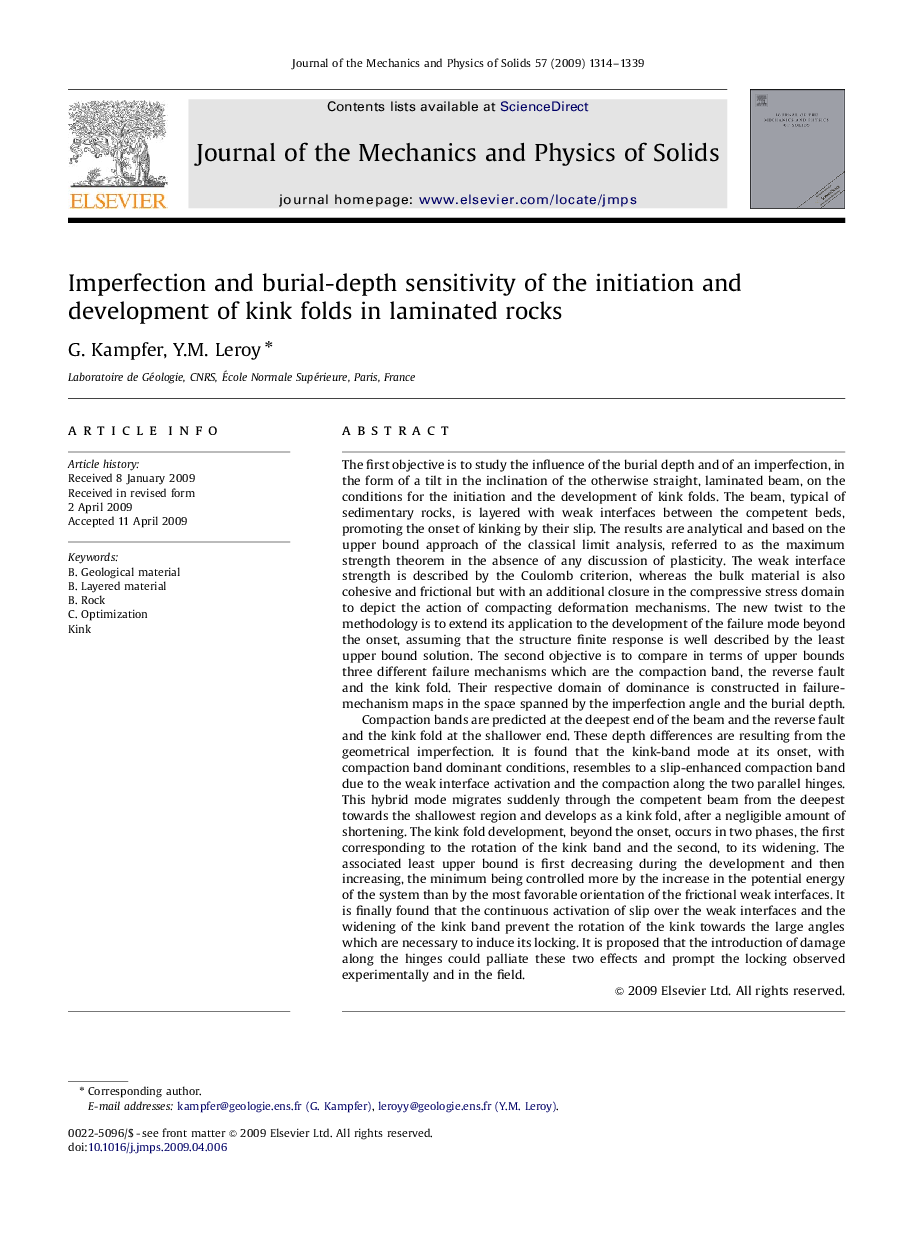| کد مقاله | کد نشریه | سال انتشار | مقاله انگلیسی | نسخه تمام متن |
|---|---|---|---|---|
| 798279 | 1467134 | 2009 | 26 صفحه PDF | دانلود رایگان |

The first objective is to study the influence of the burial depth and of an imperfection, in the form of a tilt in the inclination of the otherwise straight, laminated beam, on the conditions for the initiation and the development of kink folds. The beam, typical of sedimentary rocks, is layered with weak interfaces between the competent beds, promoting the onset of kinking by their slip. The results are analytical and based on the upper bound approach of the classical limit analysis, referred to as the maximum strength theorem in the absence of any discussion of plasticity. The weak interface strength is described by the Coulomb criterion, whereas the bulk material is also cohesive and frictional but with an additional closure in the compressive stress domain to depict the action of compacting deformation mechanisms. The new twist to the methodology is to extend its application to the development of the failure mode beyond the onset, assuming that the structure finite response is well described by the least upper bound solution. The second objective is to compare in terms of upper bounds three different failure mechanisms which are the compaction band, the reverse fault and the kink fold. Their respective domain of dominance is constructed in failure-mechanism maps in the space spanned by the imperfection angle and the burial depth.Compaction bands are predicted at the deepest end of the beam and the reverse fault and the kink fold at the shallower end. These depth differences are resulting from the geometrical imperfection. It is found that the kink-band mode at its onset, with compaction band dominant conditions, resembles to a slip-enhanced compaction band due to the weak interface activation and the compaction along the two parallel hinges. This hybrid mode migrates suddenly through the competent beam from the deepest towards the shallowest region and develops as a kink fold, after a negligible amount of shortening. The kink fold development, beyond the onset, occurs in two phases, the first corresponding to the rotation of the kink band and the second, to its widening. The associated least upper bound is first decreasing during the development and then increasing, the minimum being controlled more by the increase in the potential energy of the system than by the most favorable orientation of the frictional weak interfaces. It is finally found that the continuous activation of slip over the weak interfaces and the widening of the kink band prevent the rotation of the kink towards the large angles which are necessary to induce its locking. It is proposed that the introduction of damage along the hinges could palliate these two effects and prompt the locking observed experimentally and in the field.
Journal: Journal of the Mechanics and Physics of Solids - Volume 57, Issue 8, August 2009, Pages 1314–1339